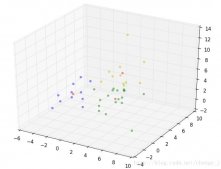任務(wù)要求:
自定義一個層主要是定義該層的實現(xiàn)函數(shù),只需要重載Function的forward和backward函數(shù)即可,如下:
|
1
2
3
|
import torchfrom torch.autograd import Functionfrom torch.autograd import Variable |
定義二值化函數(shù)
|
1
2
3
4
5
6
7
8
9
10
11
12
13
14
|
class BinarizedF(Function): def forward(self, input): self.save_for_backward(input) a = torch.ones_like(input) b = -torch.ones_like(input) output = torch.where(input>=0,a,b) return output def backward(self, output_grad): input, = self.saved_tensors input_abs = torch.abs(input) ones = torch.ones_like(input) zeros = torch.zeros_like(input) input_grad = torch.where(input_abs<=1,ones, zeros) return input_grad |
定義一個module
|
1
2
3
4
5
6
7
8
|
class BinarizedModule(nn.Module): def __init__(self): super(BinarizedModule, self).__init__() self.BF = BinarizedF() def forward(self,input): print(input.shape) output =self.BF(input) return output |
進(jìn)行測試
|
1
2
3
4
5
|
a = Variable(torch.randn(4,480,640), requires_grad=True)output = BinarizedModule()(a)output.backward(torch.ones(a.size()))print(a)print(a.grad) |
其中, 二值化函數(shù)部分也可以按照方式寫,但是速度慢了0.05s
|
1
2
3
4
5
6
7
8
9
10
11
12
|
class BinarizedF(Function): def forward(self, input): self.save_for_backward(input) output = torch.ones_like(input) output[input<0] = -1 return output def backward(self, output_grad): input, = self.saved_tensors input_grad = output_grad.clone() input_abs = torch.abs(input) input_grad[input_abs>1] = 0 return input_grad |
以上這篇pytorch自定義二值化網(wǎng)絡(luò)層方式就是小編分享給大家的全部內(nèi)容了,希望能給大家一個參考,也希望大家多多支持服務(wù)器之家。
原文鏈接:https://blog.csdn.net/weixin_42696356/article/details/100899711












